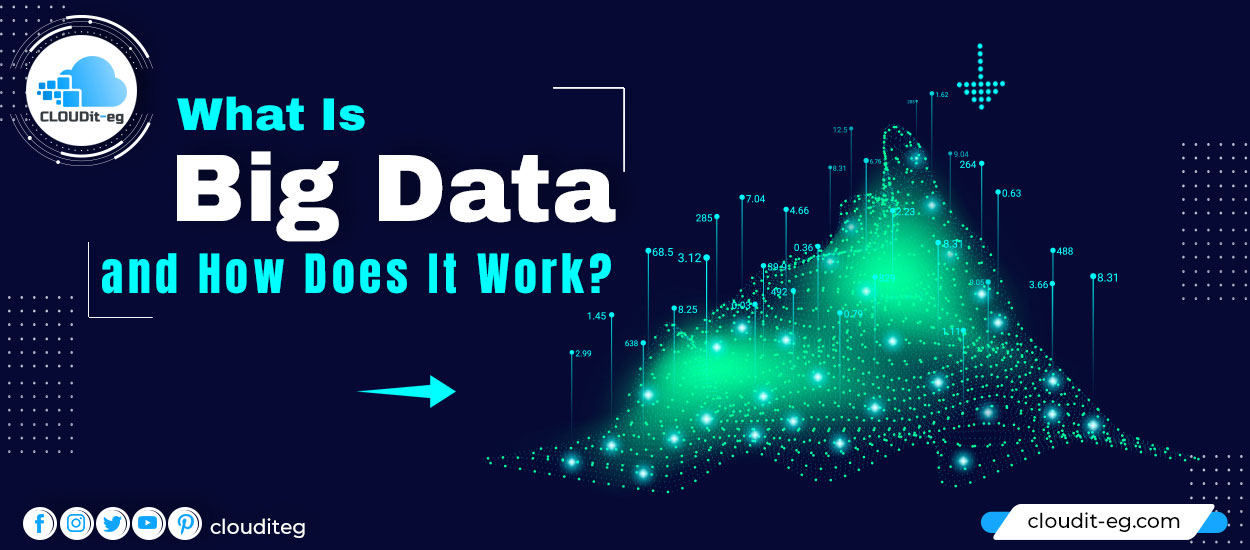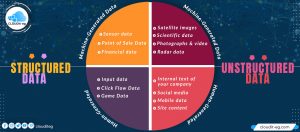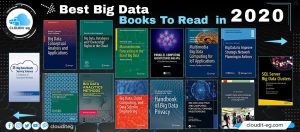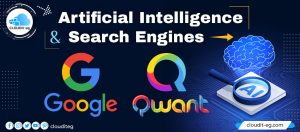More and more data is being created every day. We store more and more information about each person, and we are even starting to store more information from devices. The Internet of Things continues to evolve and very soon even your coffee machine will be tracking your coffee drinking habits and storing them in the cloud. The term Big Data first appeared in the 1960s but is now taking on a whole new meaning.
What is Big Data?
Did you know that a jet engine can generate over 10 terabytes of data for just 30 minutes of flight time? And how many flights are there per day? That’s several petabytes of information every day. The New York Stock Exchange generates about one terabyte of new trading data per day. Facebook photo and video uploads, posts, and comments create more than 500 terabytes of new data every day. Yes, that makes data! “This is what we call Big Data.
Big Data is becoming an integral part of our life. Everyone uses big business technology. And they use the data we provide to them. They constantly analyze this data in order to increase their efficiency and develop new products.
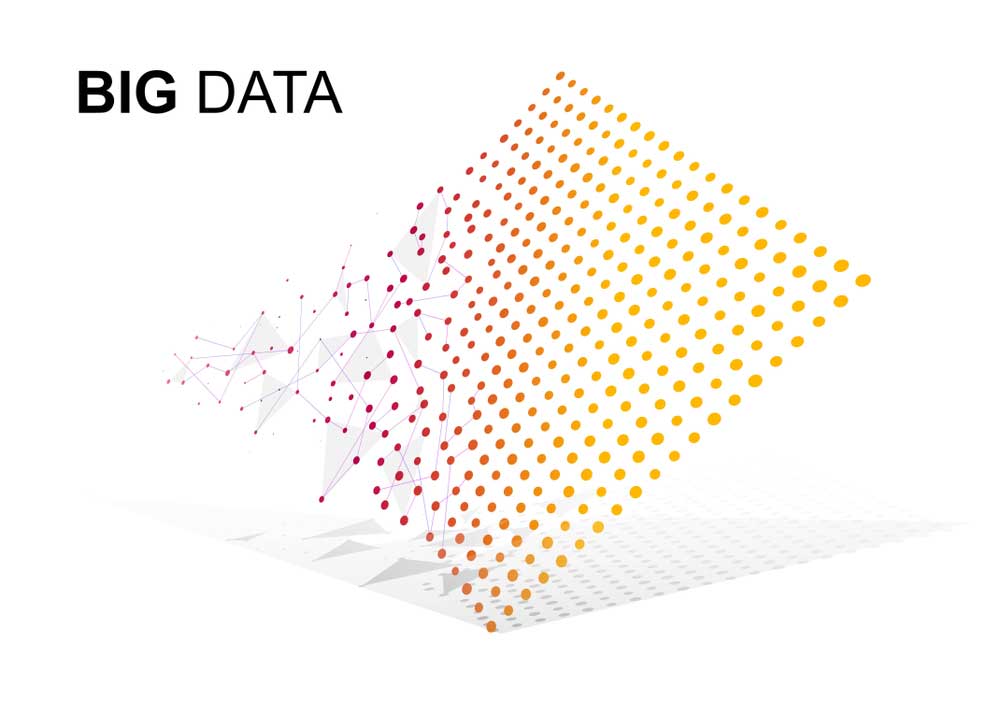
Definition
To understand Big Data, it helps to know a little about its history. By definition, Big Data is made up of varied data, the volume of which is constantly increasing and at an ever-increasing speed. This is why when we talk about Big Data, we always talk about its “big V’s”. And they are no longer limited to three because the concept of Big Data has evolved. We tell you about these big Vs in a dedicated part of this article.
Information storage is cheaper than a few years ago, making it easier and cheaper to store more data. But why do we need so much data? Data is useful in everything – you can present it to your customers, use it to create new products and features, use it to make business decisions, and more.
The term big data is not that new, but the concept of processing large volumes of data is changing. What we called Big Data a few years ago was a lot less data than it is today. It all started in the 1960s when the first part of the data warehouses opened.
Forty years later, businesses have seen how many sets of data can be collected through online services, sites, apps, and any product customers interact with. It was then that the first big data services started to gain popularity (Hadoop, NoSQL, etc.). These tools have become indispensable because they make it easier and less expensive to store and analyze big data.
Internet of Things and Big Data
The Internet of Things is no longer just a dream. More and more devices are connected to the Internet and collect data on customer usage patterns and product performance. Then someone had the idea to take advantage of it so that the machines would learn on their own. This is how machine learning was born and it too began to generate data.

Can you imagine the amount of data that represents it? And can you imagine the number of potential uses for all of this data? Having so much data will help you make decisions because you have all the information you could possibly need. You can easily solve any problem or difficulty.
Simply put, big data is made up of large and complex sets of data, collected especially from new data sources. These datasets are so important that traditional data processing software struggled to manage them, creating a new set of tools and software.
What are the tools of Big Data?
As big data grows in importance, the tools designed constantly evolve and improve. Organizations use tools such as Hadoop, Hive, Cassandra, Spark, or even Kafka according to their needs. There are so many solutions out there, and many of them are open source. There is also a foundation, the Apache Software Foundation (ASF), which supports many of these big data projects.
Given the importance of these tools for big data, we will briefly discuss some of them. One of the best-known tools for big data analysis is Apache Hadoop, an open-source framework for storing and processing large data sets.
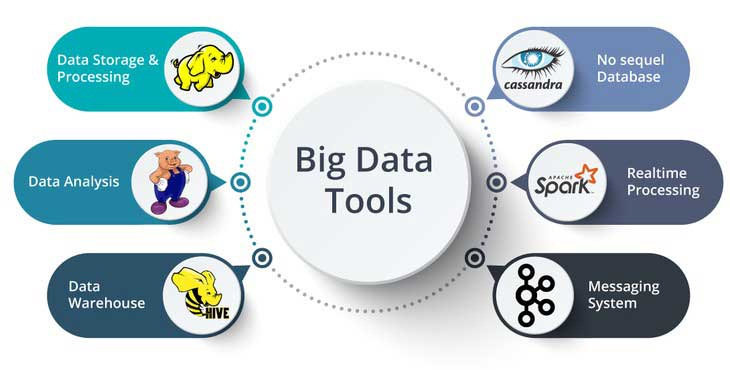
Apache Spark is another popular tool. One of the great advantages of Spark is that it is able to store much of the processing data in memory and on disk, which can be much faster. Spark is compatible with Hadoop (Hadoop Distributed File System), Apache Cassandra, OpenStack Swift, and many other data storage solutions. But one of its coolest features is its ability to run on a single local machine, which makes it much easier to use.
There is also Apache Kafka, which allows users to publish and subscribe to real-time data feeds. Kafka’s main goal is to bring the reliability of other messaging systems to streaming data.
Other Big Data tools:
- Apache Lucene can be used for all recommendation engines because it uses libraries of full-text indexing and search software.
- Apache Zeppelin is an incubating project that enables interactive data analysis with SQL and other programming languages.
- Elasticsearch is more of a business search engine. The biggest advantage of this solution is that it can generate insights from both structured and unstructured data.
- TensorFlow is a library of software that is gaining more and more attention as it is used for machine learning.
Big Data will continue to develop and evolve, and so will tools. As we mentioned, some of the tools work with structured or unstructured data. Let’s see what we mean by that.
What are the types of Big Data?
Big Data encompasses three types of data: structured, semi-structured, and unstructured data. Each type includes a lot of useful information that you can extract for use in different projects.
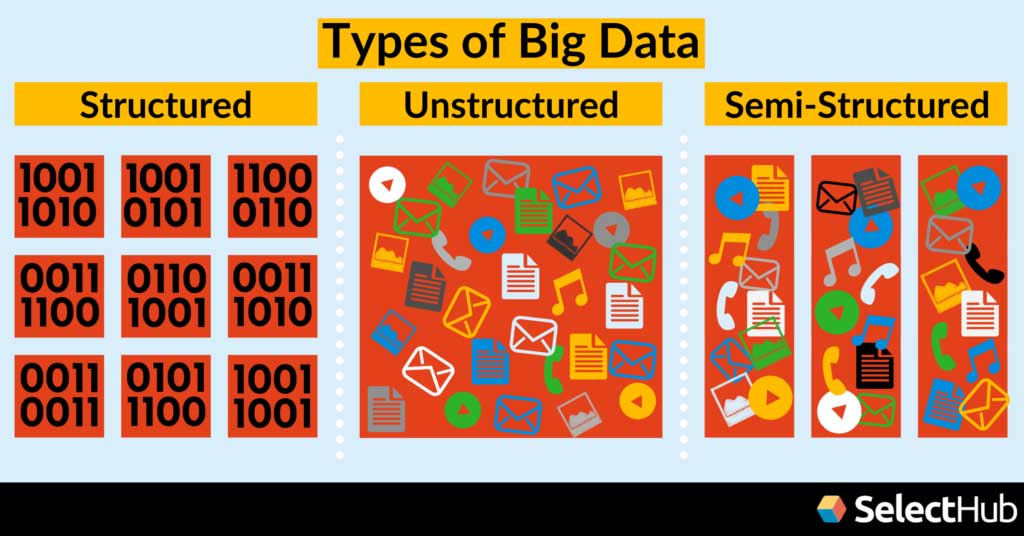
- Structured data has a fixed format and is often digital. In most cases, they are processed by machines rather than humans. This type of data consists of information already managed by the organization in databases and spreadsheets stored in SQL databases, data lakes, and data warehouses.
- Unstructured data is information that is unorganized and does not have a predetermined format, because it can be almost anything. For example, they include data collected from social networks and they can be placed in text files kept in Hadoop-like clusters or NoSQL systems.
- Semi-structured data can contain both types of data, such as web server logs or data from sensors you have set up. This is data that, although it has not been classified in a particular repository (database), contains essential information or tags separating the different elements within the data.
Big Data always includes data from multiple sources and, most of the time, of different types. So it’s not always easy to know how to integrate all the tools you need to work with different types of data.
How Big Data Works
The main idea of big data is that the more you know about something, the more information you can get from it that will help you make a decision or find a solution. In most cases, this process is fully automated: we have very advanced tools that run millions of simulations to give us the best possible result. But to do that using analytics, machine learning, or even artificial intelligence, you have to know how big data works and how to configure everything correctly.
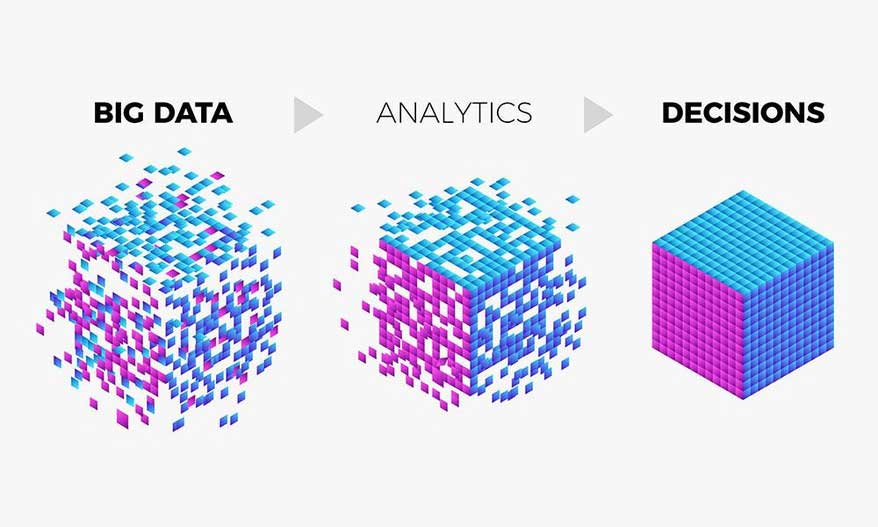
The need to process such a large amount of data requires a stable and well-structured infrastructure. It will need to process huge volumes of data of different types quickly, which can overwhelm a server or cluster. That’s why Big Data has to rely on a well-thought-out system.
It is important to consider the capacity of the system for all processes. And that can potentially require hundreds or thousands of servers for large businesses. As you can imagine, it can get expensive. And when you add all the tools you will need, it starts to do a lot. That’s why you need to know how big data works and know the three main actions behind it so that you can plan your budget and build the best possible system.
Integration
Big Data is made up of data collected from many sources, and given the enormous amount of information, new strategies and technologies have to be found to process it. In some cases, you may have petabytes of information flowing through your system, and integrating such a volume of information into your system will not be easy. You will need to receive the data, process it, and format it in a format that suits your business needs and that your customers understand.
Management
What else might you need to manage such a large volume of information? You will need a place to store them. Your storage solution can be in the cloud, on-premises, or both. You can also choose the format in which your data will be stored so that it is available in real-time on-demand. This is why more and more people are choosing a cloud storage solution that supports their current computing needs.
Analysis
Once you have received and stored the data, you need to analyze it before you can use it. Explore your data and use it to make important decisions, such as identifying the characteristics your customers want most, or use it to share your research. Make it what you want and what you need, but make the most of it. You’ve made significant investments to put this infrastructure in place, so it’s important that you use it.
As we mentioned, when we talk about Big Data, we are always talking about the big Vs behind it. When big data first appeared, there was only 3V, but more have been added. And there are more and more depending on how we use big data. Now let’s look at these big V.
What are the big Vs of Big Data?

Volume
As the name suggests, Big Data is made up of large volumes of data. So the amount of data you receive is important. This could be data of unknown value, such as data on the number of clicks on a web page or mobile app. It could be a few tens of terabytes of data for some organizations, or several hundred petabytes for others. Or maybe you know exactly the source and the value of the data you are receiving, but the volumes you are going to receive each day are very large.
Speed
Speed is the big V which represents the speed of receiving and processing data. If the data is sent directly to memory rather than written to disk, the speed will be higher and as a result, you will go much faster and provide data in near real-time. But it will also require the means to assess the data in real-time. Speed is also the most important big V for areas like machine learning and artificial intelligence.
Variety
Variety refers to the types of data available. When working with so much data, you should be aware that a lot of it is unstructured and semi-structured (text, audio, video, etc.), which requires additional processing of the metadata to make it understandable for everyone. everybody.
Veracity
Truth refers to the accuracy of the data in the data sets. You can collect a lot of data from social media or websites, but how can you be sure it is correct and correct? Poor quality data that is not verified can cause problems. Uncertain data can lead to inaccurate analyzes and lead you to make bad decisions. Therefore, you should always check your data and make sure that you have enough accurate data to get valid and meaningful results.
Value
As we have already mentioned, some of the data collected are of no value and cannot be used to make business decisions. It’s important to know the value of the data you have. You’ll also need to put in place ways to cleanse your data and make sure it’s relevant to your current purpose.
Variability
When you have a lot of data, you can use it for multiple purposes and format it in different ways. It is not easy to collect so much data, analyze it, and manage it properly. It is therefore normal to use them several times. Variability is the ability to use data for multiple purposes.
We now know what big data is, what types of data, and big V. But all of this is not really useful if we don’t know what big data can do for us and why it is increasingly important.
Why is Big Data so important?
Big Data has a lot of potential. You can use the valuable information this data provides you to make marketing decisions about your product and brand. Brands that leverage big data are able to make faster, more informed business decisions. By using all the information you have about your customers, you can create a more customer-centric product and create the content your customers are looking for or personalize their journey. It is easier to make decisions when you have all the information you need.
Think, for example, of the usefulness of Big Data in medical research, when data is used to identify the danger of contracting certain diseases based on certain personal health information or to know how certain diseases should be treated.
Online dating could achieve a success rate of over 90% when the machines learn how to form ideal couples based on all the information they have about the two people. Machine failures and breakdowns can be minimized because you will know under what conditions the failure occurs. You can have a self-driving car that’s safer than any human-driven car because it doesn’t make mistakes. It analyzes big data information in real-time and determines the best route to get to your destination on time.
Based on all the information they have about their customers, companies can now accurately predict which segments of their customers will want to buy their products and when, and therefore know when is the best time to bring them to market. And big data is also helping businesses run their operations much more efficiently.
Big Data is important to the evolution of our technology and it can make our lives easier if we use it wisely. Big Data has endless potential. Let’s see some use cases.
What are the uses of Big Data?
Depending on your needs, big data analysis can be performed by humans or by machines. By using different means of analysis, you can combine different types of data and sources to make insights and make meaningful decisions. So you can get your products to market faster and target the right audience. Below are some of the most common uses of big data.
Product development
If your product is your core business, Big Data is absolutely essential. Let’s take an example that most everyone has heard of: Netflix. How do you think Netflix manages to send you an email every week with recommendations chosen especially for you? Thanks to big data analysis, of course. The company uses predictive models and lets you know about new shows you might like by categorizing data for shows you’ve watched, currently watch, or have added to your favorites. Other businesses use additional resources like social media insights, in-store sales information, focus groups, surveys, tests, etc., to learn what to do when launching a new one. product and focus on the people to target.
Comparative analysis
When you know how your customers are behaving and can observe them in real-time, you can benchmark the journeys of other similar products and see where you stand against your competition.
Client experience
The market is so large that it is difficult for a product to be considered unique. What you can do to stand out is put effort into personalizing your customers’ experience. Big Data allows you to collect data from social media, web visits, call logs, and other sources, to improve the interaction experience and maximize the value delivered.
Machine learning
Machine learning is all the rage right now and everyone wants to know more. We are now able to create machines that learn on their own. And this ability comes from Big Data and the machine learning models that have been developed thanks to it.
Scalability and failure prediction
It is important to know at all times what percentage of your infrastructure you need to mobilize and to be able to anticipate mechanical failures. At first, it will not be easy to analyze all the data, as you will be inundated with structured (time periods, equipment) and unstructured (log entries, error messages, etc.) data. But by taking all of these indications into account, you can identify potential problems before they arise or adjust the use of your resources. With big data, you can analyze customer feedback and anticipate future demands, so you know when you need to budget for additional resources.
Fraud and compliance
Hacking is more and more frequent. One is trying to impersonate your brand, another is trying to steal your data and that of your customers … Cybercriminals are more and more creative. But security and compliance requirements are also constantly evolving. Big Data can help you identify trends in the data that indicate fraud so you know when and how to respond.
Your data analysts can find multiple uses for your data and figure out how to relate the different types of data you have. You can use this data to publish official studies and get more attention to your brand.
What is the future of Big Data?
Big Data is already a game-changer in many areas and will undoubtedly continue to grow. Imagine how much it could change our lives in the future! When all around us start to use the Internet of Things, the possibilities for using Big Data will become immense. The amount of data available will continue to increase and analytical technology will become more advanced. Big Data is one of the elements that will shape the future of humanity.
All the tools used for Big Data will also evolve. Infrastructure requirements will change. Maybe in the future, we can store all the data we need on a single machine that will have plenty of space. This could reduce our costs and make our work easier. Big Data is a topic that interests us at Mailjet and it is something that we will be monitoring closely.

